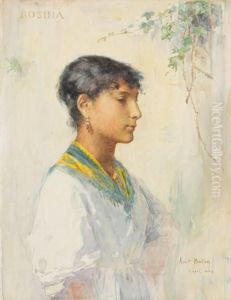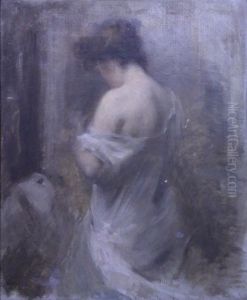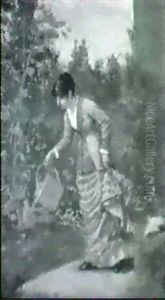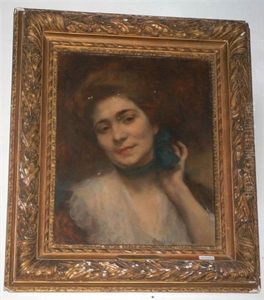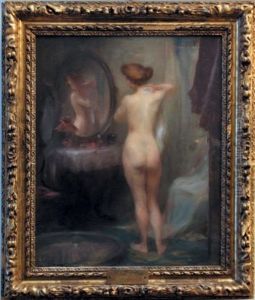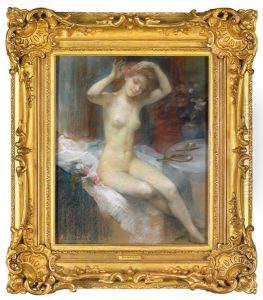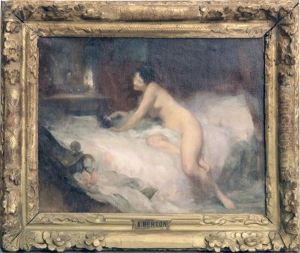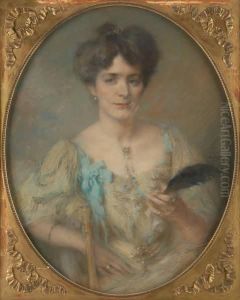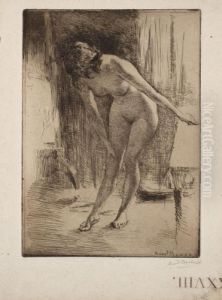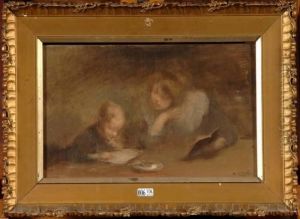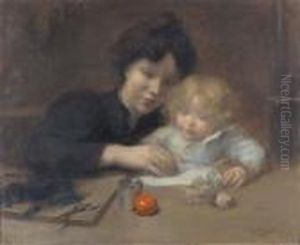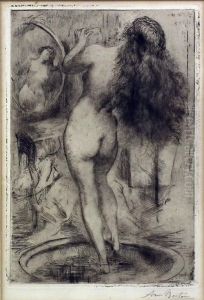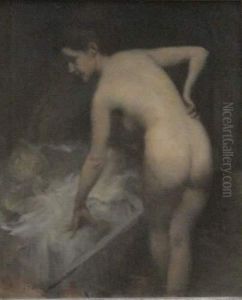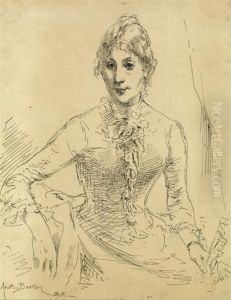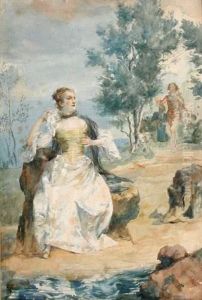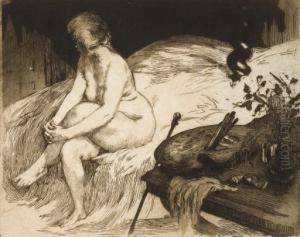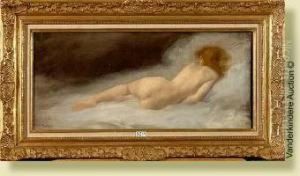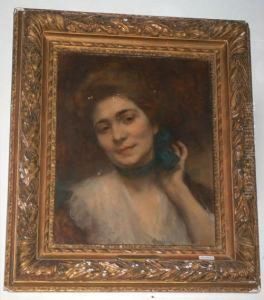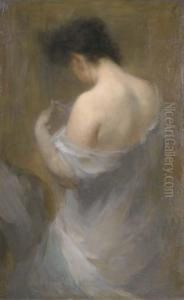Armand Berton Paintings
Armand Berton, born in 1854 in Paris, France, was a notable artist of the late 19th and early 20th centuries, whose work spans across painting, illustration, and engraving. Berton's artistic journey began at the École des Beaux-Arts in Paris, where he studied under influential figures such as Alexandre Cabanel, a prominent painter of the academic tradition. His early career was marked by a firm grounding in the academic style, with a focus on historical and mythological subjects. However, as his style evolved, Berton became known for his atmospheric landscapes and intimate interior scenes, reflecting the broader shift in the art world towards Impressionism and Post-Impressionism.
During his lifetime, Armand Berton exhibited his work at the prestigious Paris Salon, an annual art event that was the highlight of the French artistic calendar. His paintings received critical acclaim, earning him medals and recognition that bolstered his reputation among collectors and his peers. Despite his success, Berton remained somewhat detached from the leading art movements of his time, such as Impressionism, preferring instead to chart his own course that straddled the line between traditional academic painting and the emerging modernist tendencies.
Berton's artistic output was diverse, ranging from his early academic works to more experimental pieces that played with light, shadow, and color in innovative ways. His landscapes, often depicting the French countryside and rural life, are particularly noted for their serene beauty and atmospheric quality. These works showcase Berton's skill in capturing the mood of a scene, a talent that made his paintings highly sought after.
In addition to his landscape and interior paintings, Armand Berton was also a skilled illustrator and engraver, contributing to various publications of his time. This aspect of his work reflects the broader 19th-century trend of artists engaging with the printmaking medium, both for artistic expression and as a means of reaching a wider audience.
Armand Berton's legacy is that of an artist who managed to maintain a distinctive voice during a period of significant artistic change. His refusal to fully embrace any one movement, instead blending elements from different styles, has made his work a fascinating subject for art historians. Berton passed away in 1917, leaving behind a body of work that continues to be appreciated for its beauty and emotional depth. Although not as widely known as some of his contemporaries, Berton's contribution to the art of his time remains significant, offering insight into the transition from academic to modern art in France.
